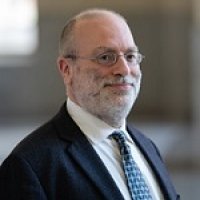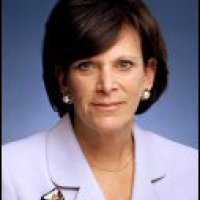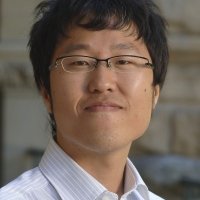Mas, contrariamente ao que muita gente crê, Hiroshima, por mais cínico e cruel que possa parecer, "poupou" vidas, ao abreviar o final da guerra.
A continuidade da guerra, em bases convencionais, e a invasão do Japão, ilha por ilha, contra soldados e até uma população que não pretendiam render-se sem ordem ou permissão do imperador, teriam custado, provavelmente, duas vezes mais vidas do que o alcançado com Hiroshima e Nagasaki, inclusive mais vidas americanas...
Paulo Roberto de Almeida
On This Day: August 6
The New York Times
On Aug. 6, 1945, the United States dropped an atomic bomb on Hiroshima, Japan, that instantly killed an estimated 66,000 people in the first use of a nuclear weapon in warfare.
First Atomic Bomb Dropped on Japan; Missile Is Equal to 20,000 Tons of TNT; Truman Warns Foe of a 'Rain of Ruin'
NEW AGE USHERED
Day of Atomic Energy Hailed by President, Revealing Weapon
HIROSHIMA IS TARGET
'Impenetrable' Cloud of Dust Hides City After Single Bomb Strikes
By SIDNEY SHALETT
Special to THE NEW YORK TIMES
Washington, Aug. 6 -- The White House and War Department announced today that an atomic bomb, possessing more power than 20,000 tons of TNT, a destructive force equal to the load of 2,000 B-29's and more than 2,000 times the blast power of what previously was the world's most devastating bomb, had been dropped on Japan.
The announcement, first given to the world in utmost solemnity by President Truman, made it plain that one of the scientific landmarks of the century had been passed, and that the "age of atomic energy," which can be a tremendous force for the advancement of civilization as well as for destruction, was at hand.
At 10:45 o'clock this morning, a statement by the President was issued at the White House that sixteen hours earlier- about the time that citizens on the Eastern seaboard were sitting down to their Sunday suppers- an American plane had dropped the single atomic bomb on the Japanese city of Hiroshima, an important army center.
Japanese Solemnly Warned
What happened at Hiroshima is not yet known. The War Department said it "as yet was unable to make an accurate report" because "an impenetrable cloud of dust and smoke" masked the target area from reconnaissance planes. The Secretary of War will release the story "as soon as accurate details of the results of the bombing become available."
But in a statement vividly describing the results of the first test of the atomic bomb in New Mexico, the War-Department told how an immense steel tower had been "vaporized" by the tremendous explosion, how a 40,000-foot cloud rushed into the sky, and two observers were knocked down at a point 10,000 yards away. And President Truman solemnly warned:
"It was to spare the Japanese people from utter destruction that the ultimatum of July 26, was issued at Potsdam. Their leaders promptly rejected that ultimatum. If they do not now accept our terms, they may expect a rain of ruin from the air the like of which has never been seen on this earth."
Most Closely Guarded Secret
The President referred to the joint statement issued by the heads of the American, British and Chinese Governments in which terms of surrender were outlined to the Japanese and warning given that rejection would mean complete destruction of Japan's power to make war.
[The atomic bomb weighs about 400 pounds and is capable of utterly destroying a town, a representative of the British Ministry of Aircraft Production said in London, the United Press reported.]
What is this terrible new weapon, which the War Department also calls the "Cosmic Bomb"? It is the harnessing of the energy of the atom, which is the basic power of the universe. As President Truman said, "The force from which the sun draws its power has been loosed against those who brought war to the Far East."
"Atomic fission" - in other words, the scientists' long-held dream of splitting the atom- is the secret of the atomic bomb. Uranium, a rare, heavy metallic element, which is radioactive and akin to radium, is the source essential to its production. Secretary of War Henry L. Stimson, in a statement closely following that of the President, promised that "steps have been taken, to assure us of adequate supplies of this mineral."
The imagination-sweeping experiment in harnessing the power of the atom has been the most closely guarded secret of the war. America to date has spent nearly $2,000,000,000 in advancing its research. Since 1939, American, British and Canadian scientists have worked on it. The experiments have been conducted in the United States, both for reasons of achieving concentrated efficiency and for security; the consequences of having the material fall into the hands of the enemy, in case Great Britain should have been successfully invaded, were too awful for the Allies to risk.
All along, it has been a race with the enemy. Ironically enough, Germany started the experiments, but we finished them. Germany made the mistake of expelling, because she was a "non-Aryan," a woman scientist who held one of the keys to the mystery, and she made her knowledge available to those who brought it to the United States. Germany never quite mastered the riddle, and the United States, Secretary Stimson declared, is "convinced that Japan will not be in a position to use an atomic bomb in this war."
A Sobering Awareness of Power
Not the slightest spirit of braggadocio is discernible either in the wording of the official announcements or in the mien of the officials who gave out the news. There was an element of elation in the realization that we had perfected this devastating weapon for employment against an enemy who started the war and has told us she would rather be destroyed than surrender, but it was grim elation. There was sobering awareness of the tremendous responsibility involved.
Secretary Stimson said that this new weapon "should prove a tremendous aid in the shortening of the war against Japan," and there were other responsible officials who privately thought that this was an extreme understatement, and that Japan might find herself unable to stay in the war under the coming rain of atom bombs.
It was obvious that officials at the highest levels made the important decision to release news of the atomic bomb because of the psychological effect it may have in forcing Japan to surrender. However, there are some officials who feel privately it might have been well to keep this completely secret. Their opinion can be summed up in the comment by one spokesman: "Why bother with psychological warfare against an enemy that laready is beaten and hasnt't sense enough to quit and save herself from utter doom?"
The first news came from President Truman's office. Newsmen were summoned and the historic statement from the Chief Executive,who still is on the high seas, was given to them.
"That bomb," Mr. Truman said, "had more power than 20,000 tons of TNT. It had more than 2,000 times the blast power of the British 'Grand Slam,' which is the largest bomb (22,000 pounds) ever yet used in the history of warfare."
Explosive Charge Is Small
No details were given on the plane that carried the bomb. Nor was it stated whether the bomb was large or small. The President, however, said the explosive charge was "exceedingly small." It is known that tremendous force is packed into tiny quantities of the element that constitutes these bombs. Scientists, looking to the peacetime uses of atomic power, envisage submarines, ocean liners and planes traveling around the world on a few pounds of the element. Yet, for various reasons, the bomb used against Japan could have been extremely large.
Hiroshima, first city on earth to be the target of the "Cosmic Bomb," is a city of 318,000, which is- or was- a major quartermaster depot and port of embarkation for the Japanese. In addition to large military supply depots, it manufactured ordinance, mainly large guns and tanks, and machine tools, and aircraft-ordinance parts.
President Truman grimly told the Japanese that "the end is not yet."
"In their present form these bombs are now in production," he said, "and even more powerful forms are in development."
He sketched the story of how the late President Roosevelt and Prime Minister Churchill agreed that it was wise to concentrate research in America, and how great secret cities sprang up in this country, where, at one time, 125,000 men and women labored to harness the atom. Even today more than 65,000 workers are employed.
"What has been done," he said, "is the greatest achievement of organized science in history.
"We are now prepared to obliterate more rapidly and completely every productive and enterprise the Japanese have above ground in any city. We shall destroy Japan's power to make war."
The President emphasized that the atomic discoveries were so important, both for the war and for the peace, that he would recommend to Congress that it consider promptly establishing "an appropriate commission to control the production and use of atomic power within the United States."
"I shall give further consideration and make further recommendations to the Congress as to how atomic power can become a powerful and forceful influence toward the maintenance of world peace," he said.
Secretary Stimson called the atomic bomb "the culmination of years of herculean effort on the part of science and industry, working in cooperation with the military authorities." He promised that "improvements will be forthcoming shortly which will increase by several fold the present effectiveness."
"But more important for the long-range implications of this new weapn," he said, "is the possiblity that another scale of magnitude will be developed after considerable research and development. The scientists are confident that over a period of many years atomic bombs may well be developed which will be very much more powerful than the atomic bombs now at hand."
Investigation Started in 1939
It was late in 1939 that President Roosevelt appointed a commission to investigate use of atomic energy for military purposes. Until then only small-scale research with Navy funds had taken place. The program went into high gear.
By the end of 1941 the project was put under direction of a group of eminent American scientists in the Office of Scientific Research and Development, under Dr. Vanever Bush, who reported directly to Mr. Roosevelt. The President also appointed a General Policy Group, consisting of former Vice President Henry A. Wallace, Secretary Stimson, Gen. George C. Marshall, Dr. James B. Conant, president of Harvard, and Dr. Bush. In June 1942, this group recommended vast expansion of the work transfer of the major part of the program to the War Department.
Maj. Gen. Leslie R. Groves, a native of Albany, N. Y., and a 48-year-old graduate of the 1918 class at West Point, was appointed by Mr. Stimson to take complete executive chargeof the program. General Groves, an engineer, holding the permanent Army rank of lieutenant colonel, received the highest praise from the War Department for the way he "fitted together the multifarious pieces of the vast, country-wide jigsaw," and, at the same time, organized the virtually air-tight security system that kept the project a secret.
A military policy committee also was appointed, consisting of Dr. Bush, chairman; Dr. Conant, Lieut. Gen. Wilhelm D. Styer and Rear Admiral William R. Purnell.
In December, 1942, the decision was made to proceed with construction of large-scale plants. Two are situated at the Clinton Engineer Works in Tennessee and a third at the Hanaford Engineer Works in the State of Washington.
These plants were amazing phenomena in themselves. They grew into large, self-sustaining cities, employing thousands upon thousands of workers. Yet, so close was the secrecy that not only were the citizens of the area kept in darkness about the nature of the project, but the workers themselves had only the sketchiest ideas- if any- as to what they were doing. This was accomplished Mr. Stimson said, by "compartmentalizing" the work so "that no one has been given more information than was absolutely necessary to his particular job."
The Tennessee reservation consists of 59,000 acres, eighteen miles west of Knoxville, it is known as Oak Ridge and has become a modern small city of 78,000, fifth largest in Tennessee.
In the State of Washington the Government has 430,000 acres in an isolated area, fifteen miles northwest of Pasco. The settlement there, which now has a population of 17,000, consisting of plant operators and their immediate families, is known as Richmond.
A special laboratory also has been set up near Santa Fe, N. M., under direction of Dr. J. Robert Oppenheimer of the University of California, Dr. Oppenheimer also supervised the first test of the atomic bomb on July 16, 1945. This took place in a remote section of the New Mexico desert lands, with a group of eminent scientists gathered, frankly fearful to witness the results of the invention, which might turn out to be either the salvation or the Frankenstein's monster of the world.
Mr. Stimson also gave full credit to the many industrial corporations and educational institutions which worked witht he War Department in bringing this titanic undertaking to fruition.
In August, 1943, a combined policy committee was appointed, consisting of Secretary Stimson, Drs. Bush and Conant for the United States; the late Field Marshall Sir John Dill (now replaced by Field Marshal Sir Henry Maitland Wilson) and Col. J. J. Llewellin (since replaced by Sir Ronald Campbell), for the United Kingdom, and C. D. Howe for Canada.
"Atomic fission holds great promise for sweeping developements by which our civilization may be enriched when peace comes, but the overriding necessities of war have precluded the full exploration of peacetime applications of this new knowledge," Mr. Stimson said. "However, it appears inevitable that many useful contributions to the well-being of mankind will ultimately flow from these discoveries when the world situation makes it posssible for science and industry to concentrate on these aspects."
Although warning that many economic factors willhave to be considered "before we can say to wha t extent atomic energy will supplement coal; oil and water as fundamental sources of power," Mr. Stimson acknowledged that "we are at the threshold of a new industrial art which will take many years and much expenditures of money to develop."
The Secretary of War disclosed that he had appointed an interim committee to study post-war control and development of atomic energy. Mr. Stimson is serving as chairman, and other members include James F. Byrnes, Secretary of State; Ralph A. Bard, former Under-Secretary of the Navy; William L. Clayton, Assistant Secreatry of State; Dr. Bush, Dr. Conant, Dr. Carl T. Compton, chief of the Office of Field Service in OSRD and president of Massachusetts Institute of Technology, and George L. Harrison, special consultant to the Secretary of War and president of the New York Life Insurance Company. Mr. Harrison is alternate chairman of the committee.
The committee also has the assistance of an advisory group of some of the country's leading physicists including Dr. Oppenheimer, Dr. E. O. Lawrence, Dr. A. H. Compton and Dr. Enrico Fermi.
The War Department gave this supplementary background on the development of the atomic bomb.
"The series of discoveries which led to developemnt of the atomic bomb started at the turn of the century when radioactivity became known to science. Prior to 1939 the scientific work in this field was world-wide, but more particularly so in the United States, the United Kingdom, Germany, France, Italy and Denmark. One of Denmark's great scientists, Dr. Neils Bohr, a Nobel Prize winner, was whisked from the grasp of the Nazis in his occupied homeland and later assisted in developing the atomic bomb.
"It is known that Germany worked desperately to solve the problem of controlling atomic energy."
RELATED HEADLINES
Report by Britain: 'By God's Mercy' We Beat Nazis to Bomb, Churchill Says: Roosevelt Aid Cited: Raiders Wrecked Norse Laboratory in Race for Key to Victory
Steel Tower 'Vaporized' in Trial of Mighty Bomb: Scientists Awe-Struck as Blinding Flash Lighted New Mexico Desert and Great Cloud Bore 40,000 Feet Into Sky
Trains Canceled in Stricken Area: Traffic Around Hiroshima Is Disrupted -- Japanese Still Sift Havoc by Split Atoms
Atom Bombs Made in 3 Hidden 'Cities': Secrecy on Weapon So Great That Not Even Workers Knew of Their Product
Reich Exile Emerges as Heroine in Denial to Nazis of Atom's Secret
OTHER HEADLINES
Hiram W. Johnson, Republican Dean in the Senate, Dies: Isolationist Helped Prevent U.S. Entry Into League -- Opposed World Charter: California Ex-Governor Ran for Vice President With Theodore Roosevelt in '12 -- In Washington Since '17
Jet Plane Explosion Kills Major Bong, Top U.S. Ace: Flier Who Downed 40 Japanese Craft, Sent Home to Be 'Safe,' Was Flying New 'Shooting Star' as a Test Pilot
Kyushu City Razed: Kenney's Planes Blast Tarumizu in Reord Blow From Okinawa, Rocket Site Is Seen, 125 B-29's Hit Japan's Toyokawa Naval Arsenal in Demolition Strike
Morris Is Accused of 'Taking a Walk': Fusion Official 'Sad to Part Company' -- McGoldrick Sees Only Tammany Aided
Chinese Win More of 'Invasion Coast': Smash Into Port 121 Miles Southwest of Canton -- Big Area Open for Landing
Turks Talk War if Russia Presses; Prefer Vain Battle to Surrender










